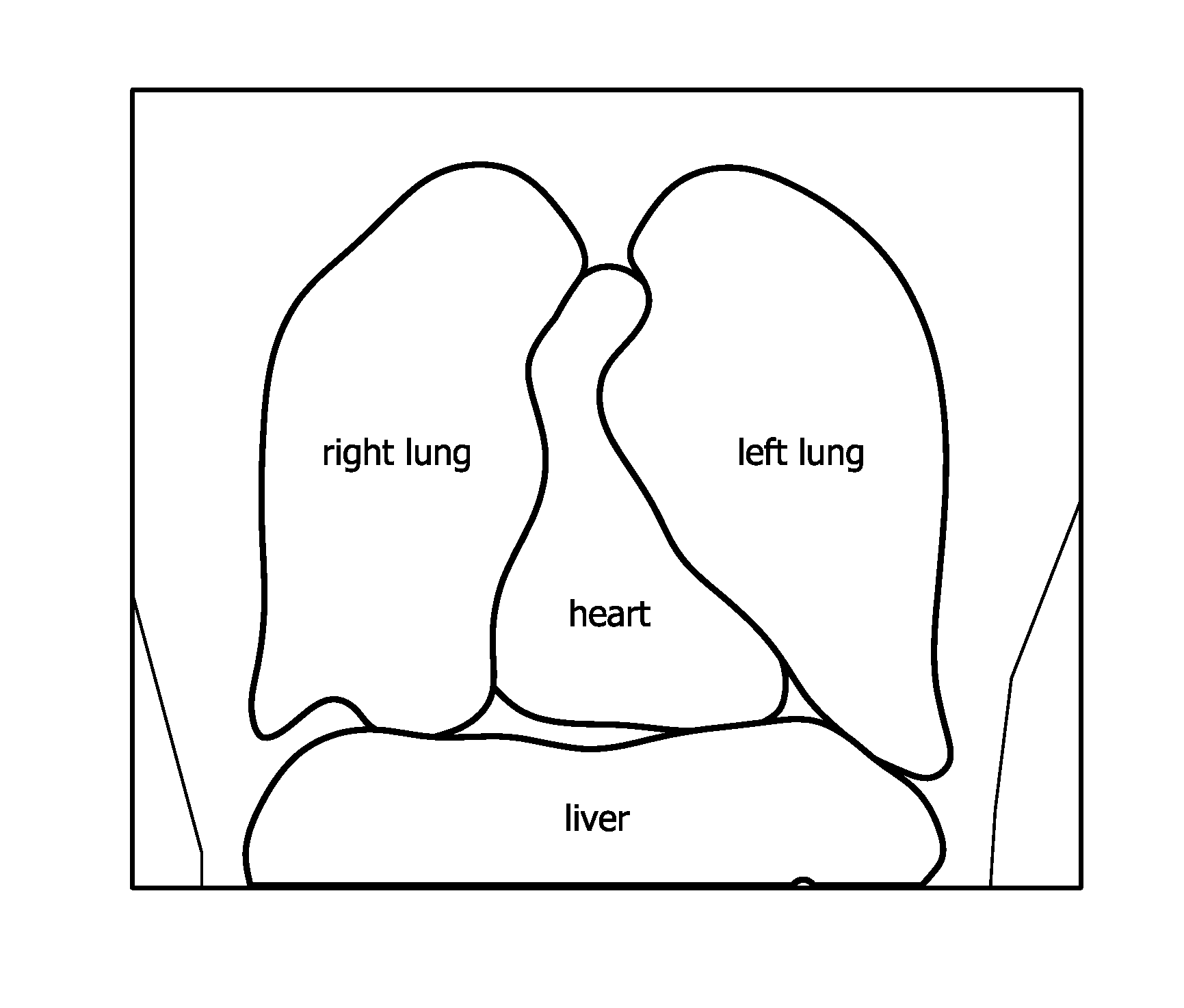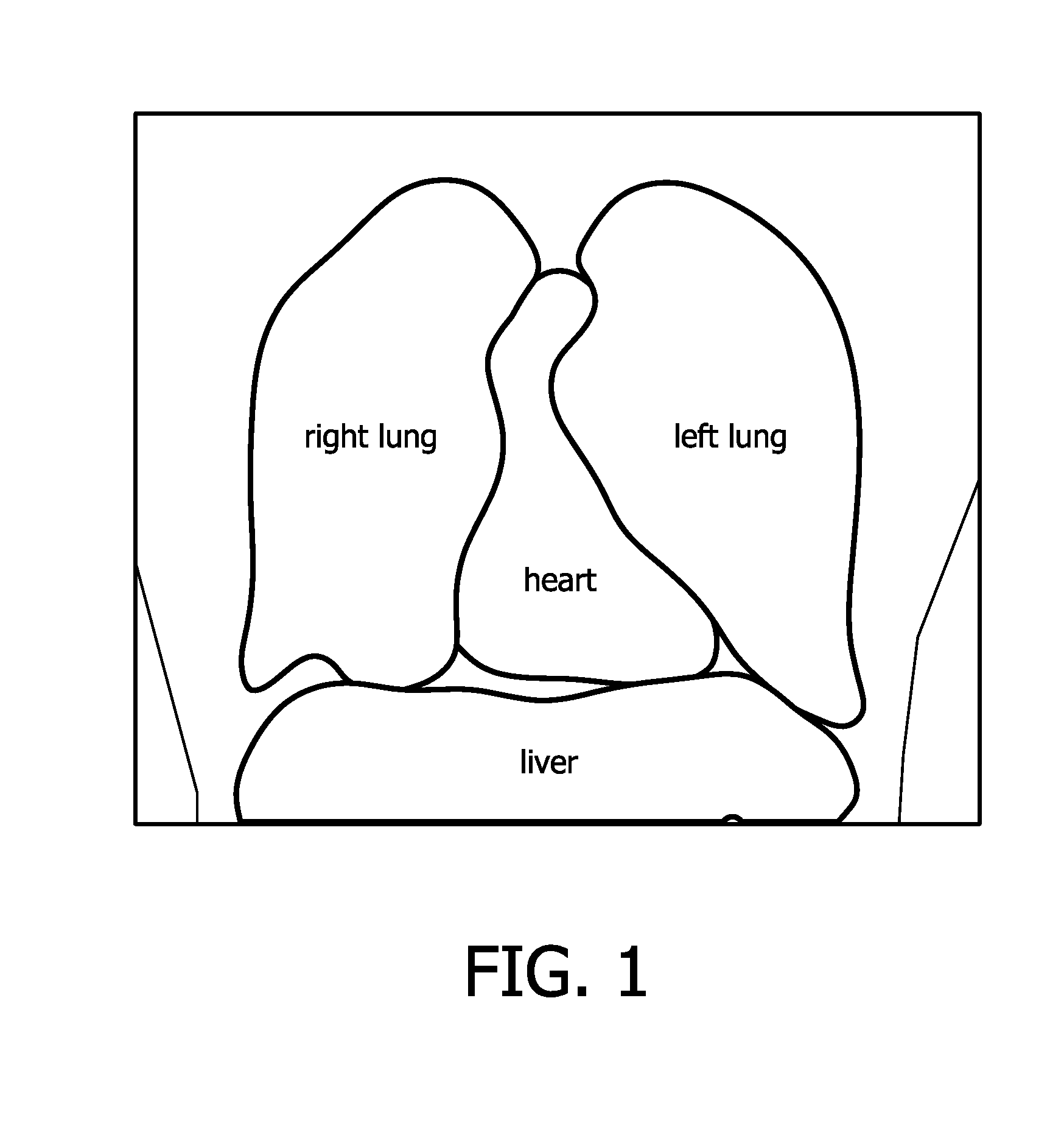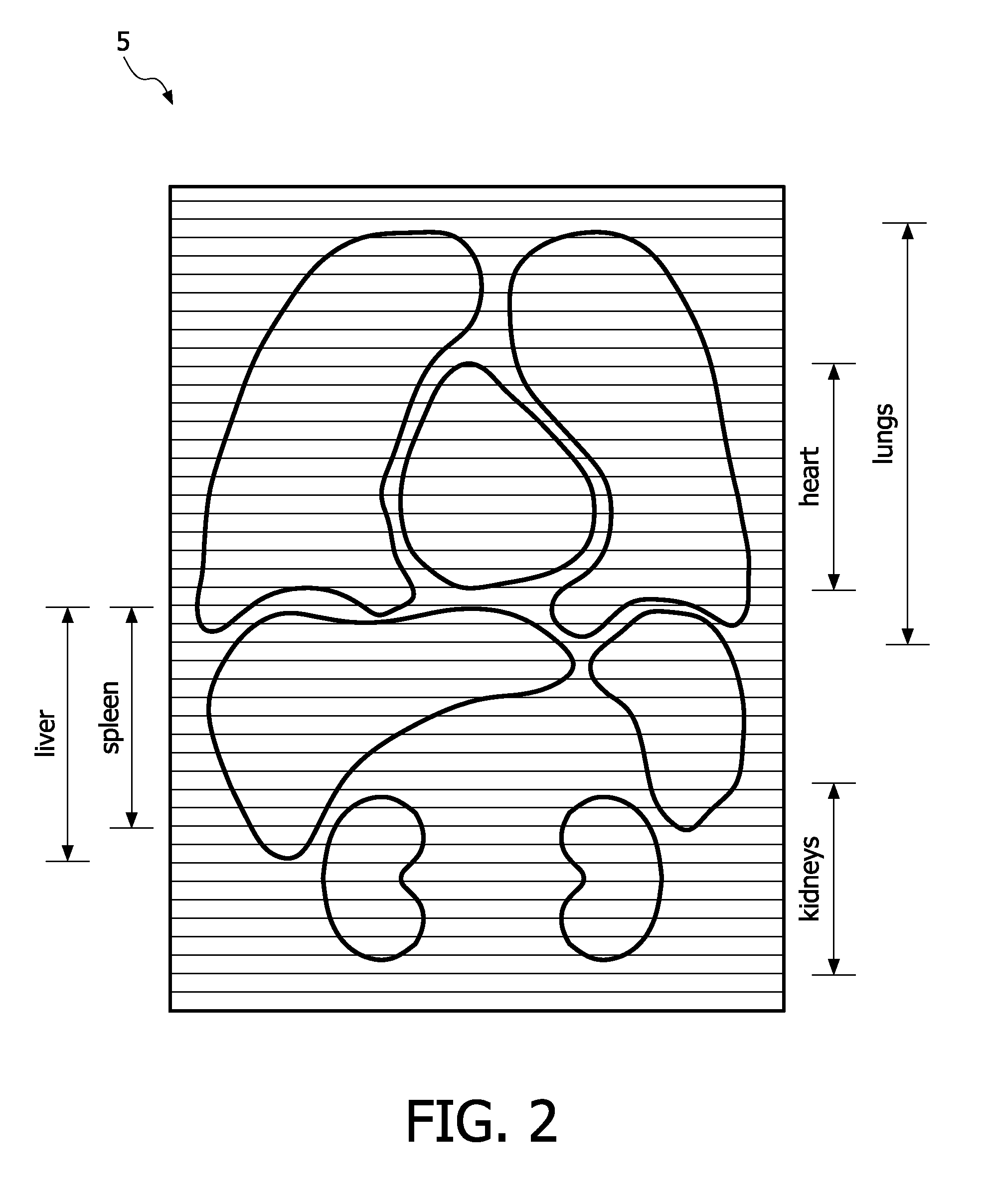Method of retrieving data from a medical image data set
a medical image and data retrieval technology, applied in the field of retrieving data from medical image data sets, can solve the problems of time-consuming, inconvenient, and inability to facilitate or accelerate the finding of target locations, and achieve the effect of improving the overview of a relatively large medical image data set and shortening user waiting times
- Summary
- Abstract
- Description
- Claims
- Application Information
AI Technical Summary
Benefits of technology
Problems solved by technology
Method used
Image
Examples
Embodiment Construction
[0045]FIG. 1 shows a schematic drawing of various organs found from a content aware analysis of the upper abdomen and the thorax of a human being (homo sapiens). In currently available systems for performing a content specific analysis with a semi-automated / automated anatomical recognition method, it is possible to analyze and recognize organs like lungs (left and right), heart, and liver (all three organs shown in FIG. 1), but also spleen, spinal cord, brain, bladder, colon, vessel structures in general, and kidneys are presently detectable from a medical image data set 5. For general reference to segmentation in medical imaging, the reader is referred to C. Xu, D. Pham, and J. L. Prince, “Medical Image Segmentation Using Deformable Models,”Handbook of Medical Imaging, Volume 2: Medical Image Processing and Analysis, pp. 129-174, edited by J. M. Fitzpatrick and M. Sonka, SPIE Press, May 2000, which is hereby incorporated by reference in its entirety.
[0046]FIG. 2 shows a schematic d...
PUM
 Login to View More
Login to View More Abstract
Description
Claims
Application Information
 Login to View More
Login to View More - R&D
- Intellectual Property
- Life Sciences
- Materials
- Tech Scout
- Unparalleled Data Quality
- Higher Quality Content
- 60% Fewer Hallucinations
Browse by: Latest US Patents, China's latest patents, Technical Efficacy Thesaurus, Application Domain, Technology Topic, Popular Technical Reports.
© 2025 PatSnap. All rights reserved.Legal|Privacy policy|Modern Slavery Act Transparency Statement|Sitemap|About US| Contact US: help@patsnap.com



